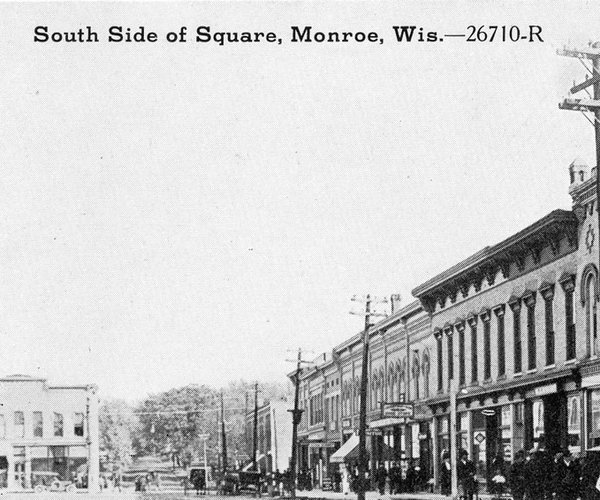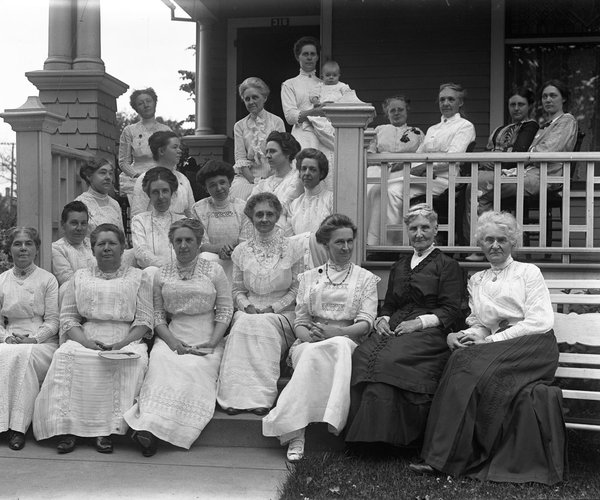It was reported in the November 29, 1937 Monroe Evening Times that Mark Hoesly, Monroe wrestler, was on the high seas with his manager and two other wrestlers. They were sailing for South Africa and planning a “barnstorming” tour at distant points. They expected to be on cards in South Africa for six months before going to New Zealand and Australia.
Mark was billed as “The Swiss Newcomer” in Cape Town, South Africa. He shared in March 1938 that fans there “go in for wrestling in a big way” and that he was received with much applause as he entered the ring. Marie Blumer, with whom he had appeared here in club exhibitions in turning and pyramid building, was one of those who shared correspondence that she received from him. His first match in Cape Town was on January 5; he had wrestled in other towns in the area, but Cape Town was his headquarters. He shared nothing about the results of his matches.
Most of his letters shared the “descriptions of native life in dark and strange Africa.” One vivid account concerned the man-eating crocodiles; another was about snakes. It seemed that Mark was “considering the possibility that he may sometime have occasion to wrestle some animal more fierce than a mat opponent.” At that time Mark did not expect to return to this country for another year.
The Times continued to keep the locals informed of Mark’s whereabouts. On March 28, 1938 it was shared that Mark’s training included swimming. He also spent much of his time sunbathing on the roof of his hotel, at which he became “used to a gallery of flatites to contend with.” He was to have a match that evening against Ed Marshall in Johannesburg. If Marshall was a Goliath to “big Mark,” he must have been very large. Marshall was “a ‘pet peeve’ of South African wrestling fans and a win over him by Mark would give the ‘Swiss newcomer’ great popularity.” The match was a non-stop battle, two out of three falls with no break until a fall was scored, a majorly tiring event. It appears that Mark lost that battle.
That same article mentioned that Mark had won a battle with fast and furious action on February 12, also in Johannes. Hoesly had been “unpopular with the crowd because of his frequent journeys for the outside of the ropes every time there was suspicion of trouble.” Hoesly had badly sprained his wrist when he tripped over the ropes. The end came in the fifth round when his opponent lifted Mark as if to pump him and then fell with Mark on top of him giving Mark the winning fall.
On April 26 the Times shared a letter that Mark had written from Capetown on March 18. He expected them to edit it into an article, but the editor chose to print the letter in its entirety. Mark didn’t share all that he knew, but said they started calling him the “shy wrestler.” At that time there were more than 8,000,000 natives in South Africa with less than 2,000,000 white people, most of them British or Dutch. The whites, he added, were very fond of wrestling with as many as 10,000 people at a single match. The South Africans had their own language, called Afrikaans, which was somewhat like Holland Dutch and taught in the schools.
Mark shared that the natives were kept very low with no education. Those natives did all of the work on the farms; most homes had a native boy, dressed in short pants and blouses, to do the housework,. The natives were not allowed to be on the streets after 9:00 at night unless they had a pass from their employer. They were also not allowed to ride in the same coaches as the whites. Some of the natives had as many as four or five wives; they did not marry, but were bought.
Mark, the farmer, also shared that farming was still in its infancy there with most farms being worked by oxen. He mentioned that he saw as many as 20 span of oxen working in one field. Natives in the country did “not wear any clothes to speak of.” He shared that the Dutch were very stubborn and didn’t want modern machinery. He went on to share more about the population, the city, jungles that were only about 100 miles away, and the gold and diamond mines.
On April 20, it was shared that Mark had moved 800 miles for his fourth African contest in Durban after winning two of three of his mat battles in Cape Town and Johannesburg. This article shared that, “Monroe’s contribution to big time wrestling is regarded as big and strong, but silent and modest, by sports writers in the African ports visited so far.” An article shared with the Times described Mark by saying, “Hoesly bore little or no trace of the badge of his profession, the cauliflower ear. Nor could we see through the beads of perspiration that danced about his pleasant countenance, that he carried any scars to remind him of his many encounters on the mat. It was only his beautifully-moulded frame which gave any indication of his calling.” The “bullet headed” man hoped to weigh in at 215 pounds for the fight.
It was reported in Monroe that this “grueling mat contest marked by fierce wrestling and an orgy of mule kicks” ended in a draw. The match in Durbin was “described as a rip-roaring, knock-‘em-down and drag-‘em-out sort of an affair.” Hoesly added the mule-kick to his repertoire despite ending up on the floor twice. One sportswriter said that Mark “with a contemptuous look at the booing gallery, came up for more.”
The final column in this series will share more about the rest of Mark’s life.
— Matt Figi is a Monroe resident and a local historian. His column will appear periodically on Saturdays in the Times. He can be reached at mfigi48@tds.net or at 608-325-6503.




